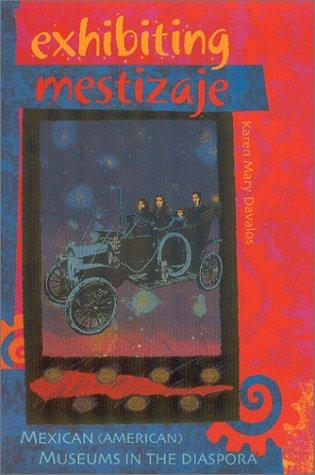

Most ebook files are in PDF format, so you can easily read them using various software such as Foxit Reader or directly on the Google Chrome browser.
Some ebook files are released by publishers in other formats such as .awz, .mobi, .epub, .fb2, etc. You may need to install specific software to read these formats on mobile/PC, such as Calibre.
Please read the tutorial at this link: https://ebookbell.com/faq
We offer FREE conversion to the popular formats you request; however, this may take some time. Therefore, right after payment, please email us, and we will try to provide the service as quickly as possible.
For some exceptional file formats or broken links (if any), please refrain from opening any disputes. Instead, email us first, and we will try to assist within a maximum of 6 hours.
EbookBell Team

4.8
14 reviewsAdvancing a Chicana feminist interpretation, Davalos carefully explores both the history of nineteenth- and twentieth-century museum practices and the more recent phenomenon of physically locating Mestizo/Chicano art within "insider spaces," (such as ethnically or racially specific cultural institutions and alternative galleries). Just as public museums instruct visitors about who does and who does not belong to a nation's cultural legacy, Davalos makes clear that exhibitions in so-called minority museums are likewise shaped by notions of difference and nationalism and by the politics of identity and race.
Davalos pays particular attention to museum and cultural centers in major Mexican diaspora communities, including the Mexican Fine Arts Museum in Chicago and Galeria de la Raza in San Francisco. Throughout she critically examines Chicano, Mexican, Mestizo, and Mexican American subjectivities as they are expressed in curatorial decisions and practices, in educational materials and catalog texts, and in the performances and other public events that accompany museum exhibits. That practice--what Davalos calls "exhibiting mestizaje," produces complex representations of Mexican (Americans). Davalos's analysis shows clearly that the value of mestizaje and diaspora lies in their ability to create a cultural poetics from fluidity and conflict.
"Davalos accomplishes the difficult task of discussing Chicano art as both aesthetic and political work. She does not reduce artistic expression to political propaganda, but neither does she examine aesthetic issues in isolation from the social processes that give them shape and meaning.--George Lipsitz, Chair, Ethnic Studies Department, UC San Diego